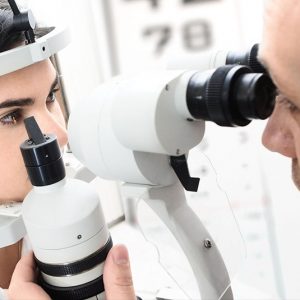
Download Optometry Schools Admissions Guide as a printable PDF
Optometrists work to evaluate, improve and preserve vision. They diagnose and treat certain conditions and diseases of the eye. Depending on the diagnosis, optometrists may prescribe medication, visual training, or corrective lenses. They examine the internal and external structure of the eye, evaluate vision and determine if glasses or contact lenses are needed. The following is a brief guide to optometry school admissions requirements while here at The University of Alabama.
Prerequisites
Below is a list of general prerequisite courses that most optometry schools require for admission; however, there are several other courses that are not required but are highly recommended. Please check with the admissions websites of individual optometry school programs to obtain a current listing of admissions course requirements. Please also take note of individual programs’ policies on acceptance of Advanced Placement (AP) credit.
All prerequisite courses must be completed with a grade of “C-” or higher.
| Subject Area | Recommended Courses |
|---|---|
| General Biology | BSC 114 and 115 (lab) and BSC 116 and 117 (lab) or honors equivalent |
| Biochemistry | BSC 450 (BSC 300 prerequisite) or CH 461 (prerequisite CH 223, CH 232 and CH 237) |
| Microbiology | BSC 310 and BSC 312 (lab) |
| General Chemistry | CH 101 and 102 or honors equivalent |
| Organic Chemistry | CH 231, CH 232 and CH 237 (lab) |
| Physics | PH 101 and PH 102 or PH 105 and PH 106 (or honors equivalent) |
| Mathematics | MATH 125 (Calculus) |
| Statistics | PY 211, BSC 380, or CHS 425 recommended |
| English | EN 101 and EN 102 or Honors EN 103 or EN 104 or AP credit |
| Social and Behavioral Sciences (SB) | PY 101 or honors equivalent Two additional SB or History electives |
| Highly Recommended | BSC 300 Cell Biology BSC 315 Genetics BSC 469 Histology of Vertebrates BSC 400 Vertebrate Function Morphology BSC 424 and BSC 425 Human Physiology |
Optometry Admission Test (OAT)
The Optometry Admission Test (OAT) is a standardized examination designed to measure general academic ability and comprehension of scientific information covering four tests: Survey of the Natural Sciences (Biology, General Chemistry, and Organic Chemistry), Reading Comprehension, Physics and Quantitative Reasoning. The Association of Schools and Colleges of Optometry (ASCO) sponsors the OAT for applicants seeking admission to an optometry program.
All schools and colleges of optometry in the United States, and the University of Waterloo, Canada require the OAT. Its purpose is to test the skills and knowledge that have been identified as key prerequisites for success in optometry school and the practice of optometry. It tests your knowledge of science from the required coursework and, therefore, should not be taken until those courses are virtually complete; the months immediately following your completion of the course requirements are the best time to take the OAT. This may be the spring of junior year, the summer after sophomore year, or anytime during senior year or beyond; it will depend on your individual timeline.
How you prepare is up to you. The OAT is offered an unlimited number of times in a calendar year; however, applicants must wait 90 days between testing dates. Only scores from the four most recent attempts and the total number of attempts will be reported.
Grade Point Average (GPA)
Optometry Schools expect academic excellence. Good grades; typically an undergraduate GPA of 3.3 or better is required to be competitive.
Timeline
Freshman Year
- Get to know your Health Professions Advisors Make an appointment
- Visit your professors during office hours
- Start taking basic sciences (See chart above)
- Begin getting involved with volunteer and service opportunities (campus and community)
- Look into getting involved in undergraduate research
- Join student organizations (Pre-Optometry Society)
- Begin to shadow an optometrist
Sophomore Year
- Continue with next sequence of courses
- Stay involved in extracurricular activities (shadowing, service, volunteer, etc.). Consider leadership positions in these groups
- Visit your professors during office hours
- Visit Health Professions Advising Office to begin to assess competitiveness
- Identify optometry programs that you want to apply to. Develop OAT preparation plan.
- Apply for summer research and enrichment programs
Junior Year
- Talk to Health Professions Advising Office about competitiveness and attend mandatory applicant meeting (Fall)
- Register, study, and take the OAT
- Work on your personal statement
- Obtain 3-5 Letters of Recommendation (Spring)
- Interview with Health Professions Advising Committee (Spring)
- Complete Application OPTOMCAS (Summer)
- Continue engaging in activities
Senior Year
- Submit OPTOMCAS if you haven’t already (Fall)
- Work on secondary applications
- Wait to be contacted for interview from optometry schools
- Continue with activities. Leave a legacy of service in your organizations.
- Talk with HPAO about Plan B if necessary
- Finish degree requirements and GRADUATE.